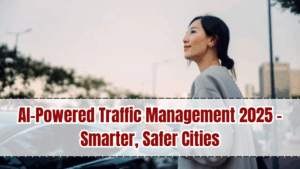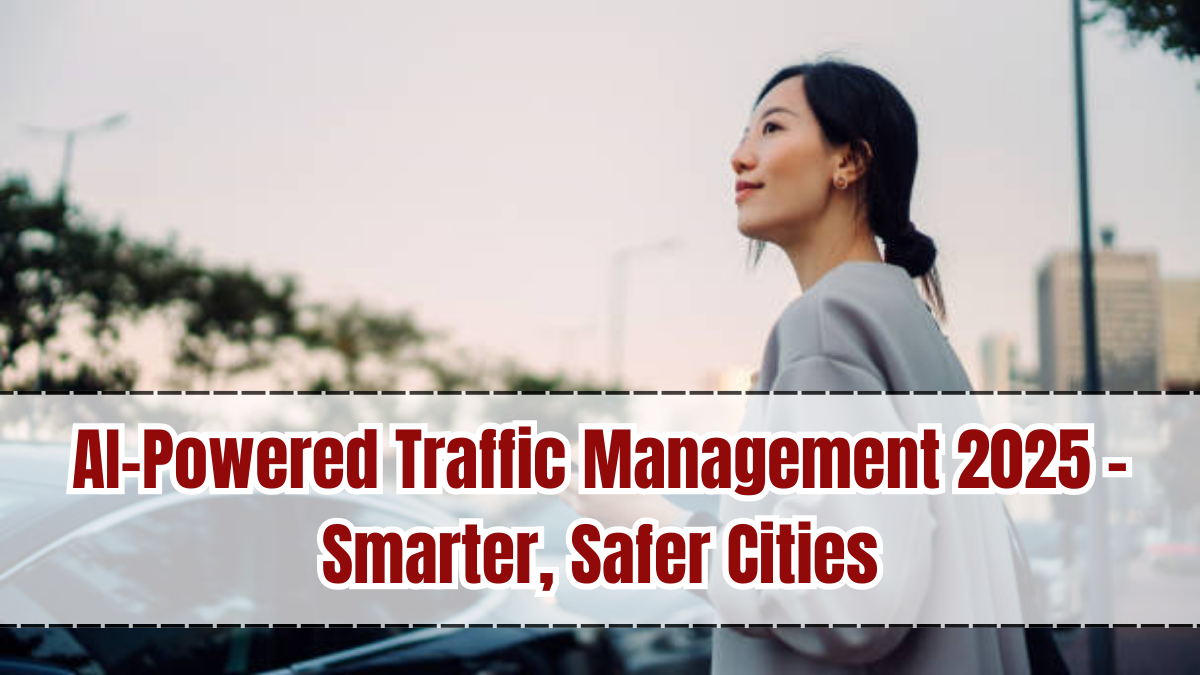Urban traffic congestion has been one of the biggest challenges for modern cities. Long queues at signals, frequent accidents, and increased fuel consumption cost both money and lives. In 2025, AI-Powered Traffic Management is transforming how cities handle road congestion and safety. By combining artificial intelligence, IoT sensors, and real-time data analytics, cities are building smarter roads that save time, reduce pollution, and enhance safety for millions of commuters.

What is AI-Powered Traffic Management?
AI-Powered Traffic Management uses artificial intelligence systems integrated with cameras, GPS, IoT sensors, and data platforms to monitor and control traffic in real time. Unlike traditional traffic signals that run on fixed timers, these AI systems can:
-
Detect real-time congestion levels.
-
Adjust signal timings dynamically.
-
Monitor traffic violations using cameras.
-
Suggest alternative routes to drivers through navigation apps.
-
Alert emergency services instantly in case of accidents.
This technology ensures roads are safer, smoother, and more efficient for daily commuters.
Why AI Traffic Management is Important in 2025
The growing number of vehicles in cities has created massive challenges. The role of AI traffic systems in 2025 is crucial because:
-
Urbanization: More people are moving into cities, increasing vehicle numbers daily.
-
Wasted Resources: Traffic jams lead to fuel loss and higher carbon emissions.
-
Accidents: Lack of smart monitoring increases road accidents.
-
Emergency Delays: Ambulances and fire trucks often get stuck in traffic.
-
Productivity Loss: Commuters waste hours every day in congestion.
AI-powered solutions ensure faster travel times, improved safety, and eco-friendly urban transport systems.
Benefits of AI-Powered Traffic Management
The implementation of AI traffic systems is bringing visible benefits in cities around the world:
-
Reduced Congestion: Real-time adjustments to traffic lights cut down waiting times.
-
Fewer Accidents: AI cameras detect overspeeding, signal jumping, and lane violations instantly.
-
Fuel and Time Savings: Optimized routes help commuters reach destinations faster.
-
Emergency Response: AI systems create green corridors for ambulances and fire brigades.
-
Environmental Impact: Reduced idle time at signals lowers carbon emissions.
-
Smarter Parking Solutions: AI-based apps guide drivers to available parking spaces.
Role of Technology
Technology is the backbone of AI-Powered Traffic Management 2025. Some of the most impactful tools include:
-
AI algorithms that process live video feeds from CCTV cameras.
-
IoT sensors embedded in roads to detect vehicle density.
-
GPS data from navigation apps to predict traffic flow.
-
Cloud computing for storing and analyzing large-scale traffic data.
-
Machine learning models that predict peak hours and accidents.
-
Smart traffic signals connected through citywide digital networks.
Government and Smart City Initiatives
Governments across the world are integrating AI-powered traffic systems as part of their smart city projects. Key initiatives include:
-
Installing AI cameras at high-risk intersections to detect violations.
-
Launching smart traffic command centers for real-time monitoring.
-
Introducing AI-enabled toll plazas to reduce waiting times.
-
Collaborating with navigation apps like Google Maps for live route updates.
-
Developing public dashboards to keep citizens informed of traffic conditions.
Countries like India, Singapore, and the UAE are already using AI to control congestion, reduce accidents, and enhance commuter experience.
Future of AI in Traffic Management
The future of AI in traffic looks highly innovative. By 2030, we can expect:
-
Autonomous traffic systems that communicate directly with self-driving cars.
-
AI drones monitoring highways from the air.
-
Predictive policing to prevent accidents before they occur.
-
Integration with electric vehicles to optimize charging routes.
-
City-wide mobility-as-a-service platforms powered by AI traffic insights.
This future will create zero-congestion smart cities where AI ensures safety and speed for all.
FAQs
What is AI-Powered Traffic Management 2025?
It is an advanced system that uses AI, IoT sensors, and real-time data to control and optimize traffic flow in cities.
How does AI reduce traffic congestion?
AI systems adjust signal timings, suggest alternate routes, and predict peak hours to minimize waiting times and traffic buildup.
Can AI traffic systems prevent accidents?
Yes, they detect violations like overspeeding and red-light jumping instantly, allowing authorities to take quick action and reduce risks.
Are AI-powered traffic systems expensive?
While initial investment is high, they save costs in the long run by reducing fuel wastage, accidents, and congestion-related expenses.
What is the future of AI in traffic management?
The future includes drones, predictive accident prevention, integration with autonomous vehicles, and smart city-wide mobility systems.
Click here to know more.
